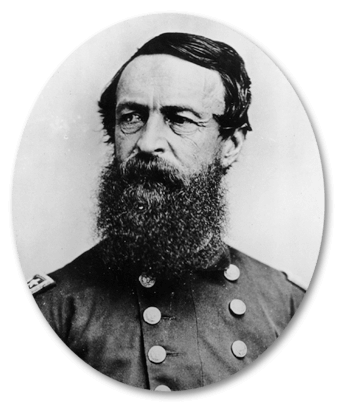Ship's Crew

David Dixon Porter
Rank(s): Lieutenant
Dates of Service: 8/1/1860 - 8/22/1860
Birth Date: 6/8/1813
Death Date: 2/13/1891
David Dixon Porter was born in Chester, Pennsylvania on June 8, 1813 to Commodore David Porter, a War of 1812 hero, and Evalina (Anderson) Porter. In 1824, his father became head of the Mexican Navy, and young David became a midshipman in that service, serving on the frigate Libertad. Sent home by his father in 1828 after suffering a slight wound, Porter received a midshipman’s warrant in the U.S. Navy on February 2, 1829. He served on the frigates Constellation and United States in the Mediterranean between1829 and 1834, but spent a year awaiting orders between ships He was promoted to passed midshipman on July 3, 1835. Porter served in the coastal survey service from 1836 to 1842, during which time he was promoted to lieutenant. He sailed on the frigate Congress in the Brazil and Mediterranean Squadrons from 1842 to 1845. Next, he was assigned to the Hydrographic Office at the Naval Observatory from 1845 to 1846, and then spent nine months in the Recruiting Office in New Orleans. After just two months in the Home Squadron, he was back at the Naval Observatory for four months, and then on coast survey from January 1848 to November 1849. He took leave and commanded merchant steamers for the follwoing six years. From 1855 to 1857, he captained Supply before being stationed at the Portsmouth Navy Yard.
In 1860, the navy decided to employ Constitution as a stationary school ship at the Naval Academy at Annapolis, Maryland. On August 1 of that year, Porter was detailed to command her for the move from the Portsmouth Navy Yard, a situation also referred to as “job captain.” Taking a scratch crew drawn together from several sources, he sailed the frigate south and turned her over to the school.
Porter next was assigned to the Pacific Coast Survey for seven months. At the outbreak of the American Civil War, he commanded the sidewheel steamer Powhatan on blockade duty for six months. He next commanded the mortar boat flotilla of the West Gulf Blockading Squadron. Promoted to acting rear admiral, Porter commanded the Mississippi River Squadron, the USS Black Hawk, and the North Atlantic Blockading Squadron until the end of the war. He subsequently served as commandant of the Naval Academy, and largely rebuilt the war-ravaged school. He became the navy’s second full admiral on August 15, 1870, following the death of Admiral David Glasgow Farragut. Porter died in Washington, D.C. on February 13, 1891, and was interred at Arlington National Cemetery.